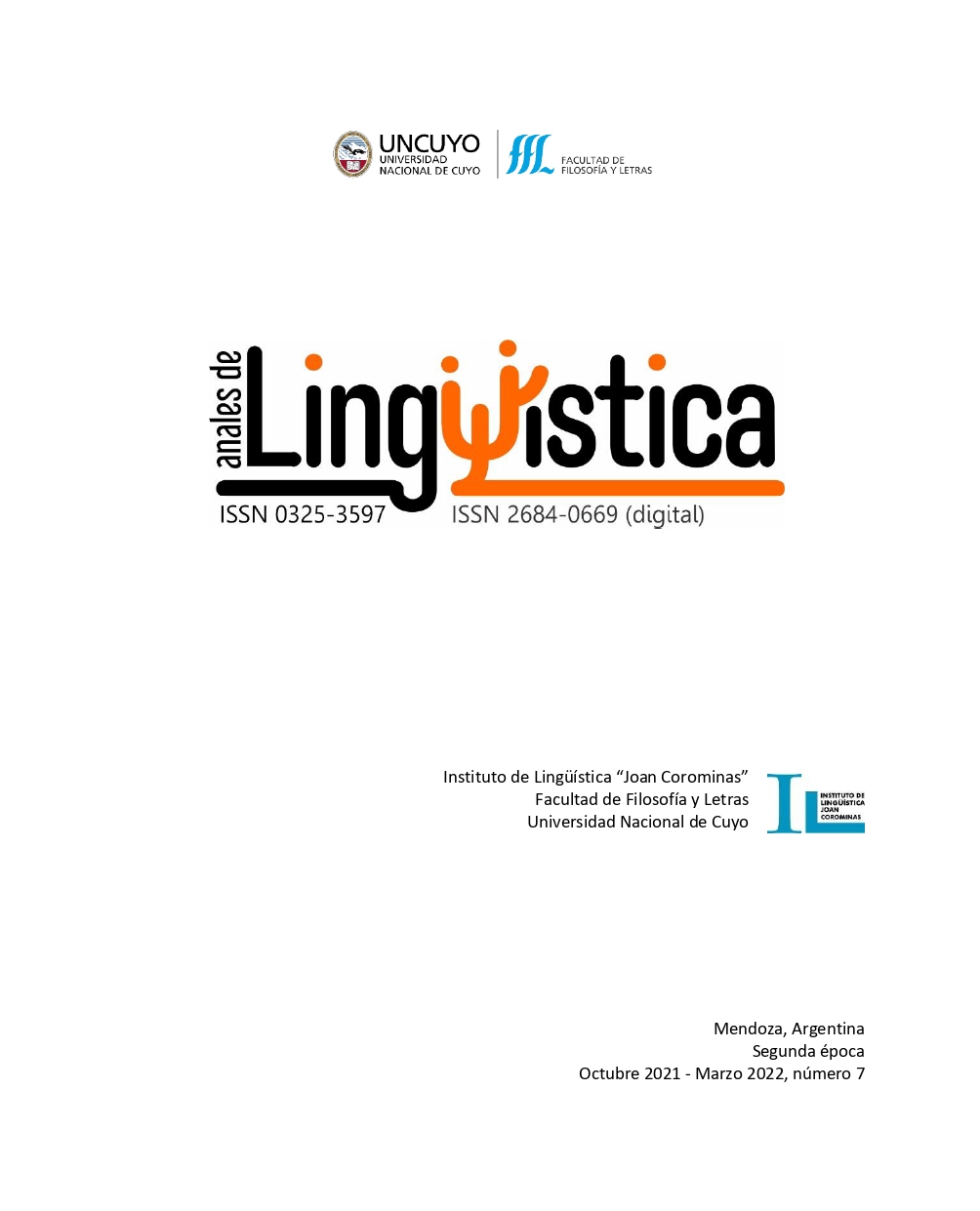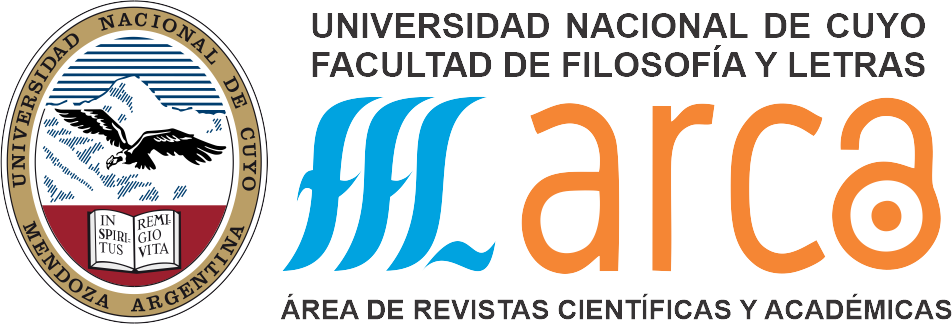Modelos de aprendizaje profundo para comprensión de textos y una implementación prototípica de GPT-2 para una tarea específica de generación de lenguaje natural
Palabras clave:
aprendizaje profundo, ELMo, BERT, GPT-2, comprensión del lenguaje natural, generación de textoResumen
Desde el año 2013, el paradigma conexionista en procesamiento de lenguaje natural (PLN) ha venido resurgiendo en ámbitos académicos a partir de nuevas arquitecturas para luego ser adoptado en la industria de software. Este paradigma hace uso de poderosos recursos de cómputo, en una revolución algorítmica conocida como aprendizaje profundo (Deep Learning). Numerosas y sucesivas propuestas superadoras se han ofrecido en una vertiginosa carrera por obtener métricas (benchmarking) que se acercaran al estado del arte para tareas generales de PNL, según diversos estándares (BLEU, GLUE, SuperGLUE). A partir de 2018, con la revolución de los transformers en los últimos dos años (ELMo, BERT y GPT-2), los modelos de Deep Leaning atrajeron aún más el interés de la comunidad científica, de la industria y de neófitos. En este artículo, proponemos una sucinta pero exhaustiva historización de los modelos que han venido evolucionando durante esta revolucionaria última década y ofrecemos, a modo de ejemplo ilustrativo, una arquitectura de implementación completa de Deep Learning para el modelo de código abierto más reciente GPT-2, entrenado para una tarea específica de generación de slogans comerciales en cualquier segmento de producto.
Citas
Bahdanau, D., Cho, K. y Bengio, Y. (2015). Neural Machine Translation by Jointly Learning to Align and Translate. En ICLR 2015. Recuperado de https://arxiv.org/abs/1409.0473.
Bastings, J., Titov, I., Aziz, W., Marcheggiani, D. y Sima’an, K. (2017). Graph Convolutional Encoders for Syntax-aware Neural Machine Translation. En Proceedings of the 2017 Conference on Empirical Methods in Natural Language Processing, (pp. 1957-1967). Recuperado de https://www.aclweb.org/anthology/D17-1209.pdf
Bradbury, J., Merity, S., Xiong, C. y Socher, R. (2017). Quasi-Recurrent Neural Networks. En ICLR 2017. Recuperado de http://arxiv.org/abs/1611.01576.
Dai, A. M. y Le, Q. V. (2015). Semi-supervised Sequence Learning. En Advances in Neural Information Processing Systems (NIPS ’15), (pp. 1-9). Recuperado de https://papers.nips.cc/paper/5949-semi-supervised-sequence-learning.pdf.
Devlin, J., Chang, M., Lee K. y Toutanova, K. (2018). BERT: Pre-training of Deep Bidirectional Transformers for Language Understanding. En Proceedings of the 2019 Conference of the North American Chapter of the Association for Computational Linguistics (NAACL): Human Language Technologies, Volume 1 (Long and Short Papers), (pp. 4171-4186). Recuperado de https://www.aclweb.org/anthology/N19-1423.pdf.
Dyer, C., Kuncoro, A., Ballesteros, M. y Smith, N. A. (2016). Recurrent Neural Network Grammars. En NAACL. Recuperado de: http://arxiv.org/abs/1602.07776.
Elman, J. L. (1990). Finding structure in time. Cognitive science, 14(2), 179-211.
Gatt, A. y Krahmer, E. (2018). Survey of the State of the Art in Natural Language Generation: Core tasks, applications, and evaluation. Journal of Artificial Intelligence Research, 61, 65-170.
Graves, A., Wayne, G., Reynolds, M., Harley, T., Danihelka, I., Grabska-Barwińska, A., Gómez Colmenajero, S., Grefenstette, E., Ramalho, T., Agapiou, J., Puigdomènech Badia, A., Moritz Hermann, K., Zwols, Y., Ostrovski, G., Cain, A., King, H., Summerfield, C., Blunsom, P., Kavukcuoglu, K. y Hassabis, D. (2016). Hybrid computing using a neural network with dynamic external memory. Nature, 538, 471-476.
Henaff, M., Weston, J., Szlam, A., Bordes, A. y LeCun, Y. (2017). Tracking the World State with Recurrent Entity Networks. En Proceedings of ICLR 2017.
Hochreiter, S. y Schmidhuber, J. (1997). Long short-term memory. Neural computation, 9(8), 1735-1780.
Howard, J. y Ruder, S. (2018). Universal Language Model Fine-tuning for Text Classification. En Proceedings of ACL 2018, (pp. 328-339). Recuperado de https://www.aclweb.org/anthology/P18-1031.pdf.
Kalchbrenner, N., Grefenstette, E. y Blunsom, P. (2014). A Convolutional Neural Network for Modelling Sentences. En Proceedings of the 52nd Annual Meeting of the Association for Computational Linguistics, (pp. 655–665). Recuperado de http://arxiv.org/abs/1404.2188.
Kalchbrenner, N., Espeholt, L., Simonyan, K., Oord, A. van den, Graves, A. y Kavukcuoglu, K. (2016). Neural Machine Translation in Linear Time. ArXiv Preprint ArXiv: Recuperado de http://arxiv.org/abs/1610.10099.
Kim, Y. (2014). Convolutional Neural Networks for Sentence Classification. En Proceedings of the Conference on Empirical Methods in Natural Language Processing, (pp. 1746–1751). Recuperado de http://arxiv.org/abs/1408.5882.
Kumar, A., Ondruska, P., Iyyer, M., Bradbury, J., Gulrajani, I., Zhong, V., Paulus, R. y Socher, R. (2016). Ask me anything: Dynamic memory networks for natural language processing. En International Conference on Machine Learning, (pp. 1378-1387). Recuperado de https://arxiv.org/pdf/1506.07285.pdf.
Levy, O. y Goldberg, Y. (2014). Dependency-Based Word Embeddings. En Proceedings of the 52nd Annual Meeting of the Association for Computational Linguistics (Short Papers), (pp. 302–308). Recuperado de https://doi.org/10.3115/v1/P14-2050.
Merity, S. Shirish Keskar, N. y Socher, R. (2017). Regularizing and Optimizing LSTM Language Models. Recuperado de https://arxiv.org/pdf/1708.02182.pdf.
Mikolov, T., Sutskever, I., Chen, Kia., Corrado, G. y Dean, J. (2013). Distributed representations of words and phrases and their compositionality. En Proceedings of NAACL-HLT 2018, (pp. 2227–2237). Recuperado de https://aclweb.org/anthology/N18-1202.
Pennington, J., Socher, R. y Manning, C. (2014). Glove: Global vectors for word representation. En Proceedings of the 2014 Conference on Empirical Methods in Natural Language Processing (EMNLP), (pp. 1532–1543). Recuperado de https://www.aclweb.org/anthology/D14-1162.
Peters, M. E., Neumann, M., Iyyer, M., Gardner, M., Clark, C., Lee, K. y Zettlemoyer, L. (2018). Deep contextualized word representations. En Proceedings of the 2018 Conference of the North American Chapter of the Association for Computational Linguistics (NAACL): Human Language Technologies, Volume 1 (Long Papers), (pp. 2227-2237). Recuperado de https://www.aclweb.org/anthology/N18-1202.
Radford, A., Wu, J., Child, R., Luan, D., Amodei, D. y Sutskever, I. (2019). Language Models Are Unsupervised Multitask Learners [blog]. OpenAI Blog, 1, 8.
Ramachandran, P., Liu, P. J. y Le, Q. V. (2017). Unsupervised Pretraining for Sequence to Sequence Learning. En Proceedings of EMNLP 2017.
Ruder, S. (2018). A review of the recent history of NLP [blog]. Recuperado de https://ruder.io/a-review-of-the-recent-history-of-nlp/.
Socher, R., Perelygin, A. y Wu, J. (2013). Recursive deep models for semantic compositionality over a sentiment treebank. En Proceedings of the 2013 Conference on Empirical Methods in Natural Language Processing, (pp. 1631–1642).
Sutskever, I., Vinyals, O. y Le, Q. V. (2014). Sequence to sequence learning with neural networks. En Advances in Neural Information Processing Systems (NIPS ’14). Recuperado de: https://papers.nips.cc/paper/5346-sequence-to-sequence-learning-with-neural-networks.pdf.
Sukhbaatar, S., Szlam, A., Weston, J. y Fergus, R. (2015). End-To-End Memory Networks. En Proceedings of NIPS 2015. Recuperado de http://arxiv.org/abs/1503.08895.
Subramanian, S., Trischler, A., Bengio, Y. y Pal, C. J. (2018). Learning General Purpose Distributed Sentence Representations via Large Scale Multi-task Learning. En Proceedings of ICLR 2018.
Tai, K. S., Socher, R. y Manning, C. D. (2015). Improved Semantic Representations From Tree-Structured Long Short-Term Memory Networks. En ACL 2015, (pp. 1556–1566).
Vaswani, A., Shazeer, N., Parmar, N., Uszkoreit, J., Jones, L., Gomez, A. N., Kaiser, L. y Polosukhin, I. (2017). Attention Is All You Need. Advances in Neural Information Processing Systems (NIPS), 1-11. Recuperado de https://papers.nips.cc/paper/7181-attention-is-all-you-need.pdf.
Wang, J., Yu, L., Lai, K. R. y Zhang, X. (2016). Dimensional Sentiment Analysis Using a Regional CNN-LSTM Model. En Proceedings of the 54th Annual Meeting of the Association for Computational Linguistics (ACL 2016), (pp. 225–230).
Wang, A., Singh, A., Michael, J., Hill, F., Levy, O. y Bowman, S. (2019a). GLUE: A multi-task benchmark and analysis platform for natural language understanding. En International Conference on Learning Representations. Recuperado de https://openreview. net/forum?id=rJ4km2R5t7
Wang, A., Pruksachatkun, Y., Nangia, N., Singh, A., Michael, J., Hill, F., Levy, O. y Bowman, S. (2019b). SuperGLUE: A Stickier Benchmark for General-Purpose Language Understanding Systems. En 33rd Conference on Neural Information Processing Systems (NeurIPS 2019). Recuperado de https://w4ngatang.github.io/static/papers/super glue.pdf.
Descargas
Publicado
Cómo citar
Número
Sección
Licencia
Derechos de autor 2021 Anales de Lingüística
Esta obra está bajo una Licencia Creative Commons Atribución 2.5 Argentina.
Los/as autores/as que publican en esta revista están de acuerdo con los siguientes términos:
1. Los/as autores conservan los derechos de autor y garantizan a la revista el derecho de ser la primera publicación del trabajo bajo una licecncia Creative Commons Atribución 2.5 Argentina (CC BY 2.5 AR) . Por esto pueden compartir el trabajo con la referencia explícita de la publicación original en esta revista.
2. Anales de lingüística permite y anima a los autores a difundir la publicación realizada electrónicamente, a través de su enlace y/o de la versión postprint del archivo descargado de forma independiente.
3. Usted es libre de:
Compartir — copiar y redistribuir el material en cualquier medio o formato
Adaptar — remezclar, transformar y construir a partir del material para cualquier propósito, incluso comercialmente.
















